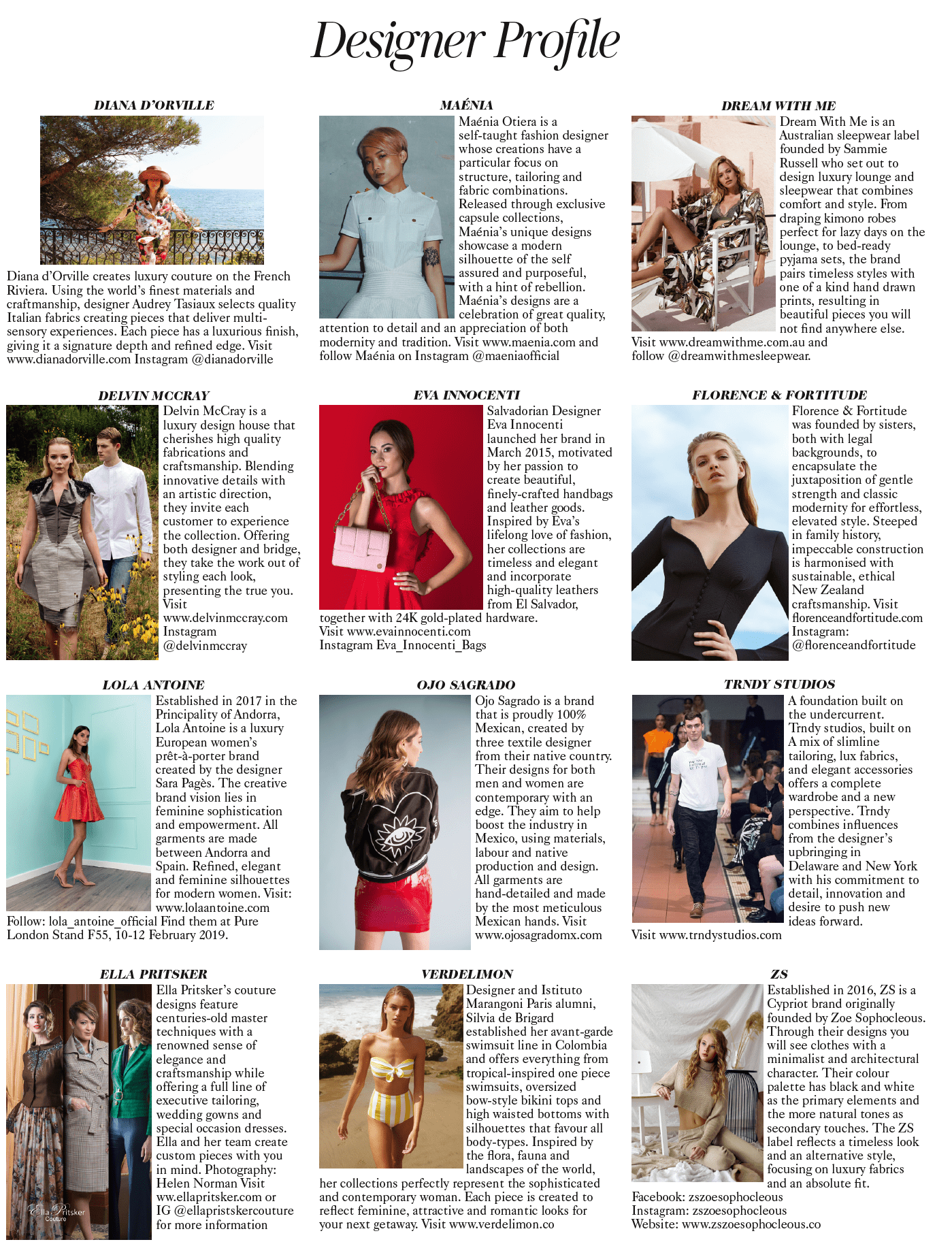Diana d’Orville’s ‘ISLE JOYEUSE’ palazzo set featured in British Vogue.
VOGUE ISSUE EDITOR’S NOTE
When, in March last year it was announced that Riccardo Tisci, one of the most popular and respected minds working in fashion today, had been appointed chief creative officer at Burberry, I was simultaneously surprised and delighted: I knew it to be an excellent choice. In his blockbuster career, the charming, hyper-focused Italian has had many incarnations – from gothic master to the king of sports luxe – but you pigeonhole Riccardo at your risk. Above all, he is one of those rare, brilliant designers who can do anything.
Of course, some questioned how an Italian might handle Britain’s most storied mega-brand. Luckily, Riccardo’s love and understanding of the UK runs deep. We first met in the late ’90s in London, when he moved here to study. He was great friends with the model Mariacarla Boscono, and would hang around with Naomi Campbell, Kate Moss and all the supermodels of the day. Back then, he was the shy friend in the corner, a quiet and reserved fashion student and club kid in London who was part of a young generation on the scene. It was only after he left Central Saint Martins and first became a designer for Coccapani, then launched his own label, then went to Givenchy, that he became “Riccardo”.
In the years since, he has had a transformative effect on many areas of fashion. He championed sportswear, he brought in real models and temporarily finished off the male waif. He celebrated a certain kind of woman with a strong, almost predatory energy, who certainly didn’t need a man. Long before it became fashionable, he hired all sorts of models: black, white, Asian, trans – he didn’t care. He just loved beauty. He brought back ethnic models at a time when nobody was using them. For that, I will always give him credit.
This month, I had the privilege of working closely with Burberry’s new man on a special editorial to herald the beginning of the company’s next phase. In the issue, Vogue meets Riccardo, while Kate Moss, Stella Tennant and others showcase the best of what is to come from the designer. There is such a fantastic new energy around the brand, yet Riccardo is determined to maintain total respect for its heritage. It feels like an exciting new chapter for Burberry, for fashion and for Britain.
As you will have deduced from February’s cover star, Emma Stone, this month is also about film. With the awards season hitting its stride, Vogue offers its annual roll call of the best Hollywood performances this year, with our focus on female-centric stories and the women who are telling them. Like many industries, Hollywood still has a lot to do when it comes to achieving equality, both in the work it produces and how it’s produced.
But as the roots of change begin to show, I wanted to take a moment to put a spotlight on the strides being made, and have the most sumptuous fashions of a new season interpreted by some of the world’s most respected actresses and directors. In Nick Knight’s portfolio, you will find classicism, novelty and more than a little strength. How fitting.
Vogue’s issue online here.



